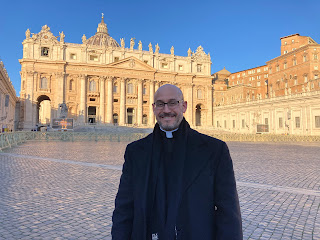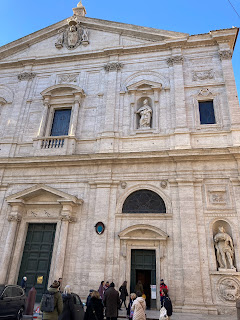St. Peter's Basilica

Our pilgrimage concluded Saturday and Sunday, January 13 and 14 with a visit to St. Peter's Basilica, a tour of the "Scavi" - the excavations of the necropolis under the basilica, a tour of the Vatican Museums, Mass in St. Peter's at the main altar, and the Angelus and blessing of Pope Francis in St. Peter's Square. List of Pope's buried in St. Peter's Basilica Nave of St. Peter's Basilica Pieta of Michelangelo Tomb of Pope Benedict XVI View from the front of St. Peter's looking down the Via della Conciliazione Outside views of the Vatican Museum tour. Tombs of Constantine used for his mother and daughter Tapestries of the Resurrection Michelangelo modeled the image of Christ in "The Last Judgement" in the Sixtine Chapel on this sculpture. Sculpture discovered at the Domus Aurea The Hall of Maps "Stairs of the Kings" - the stairs leading down from the Sistine Chapel which the Pope walks down after his election. "Ange...




